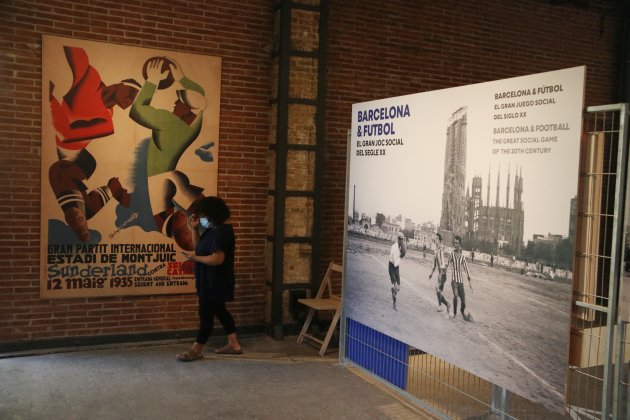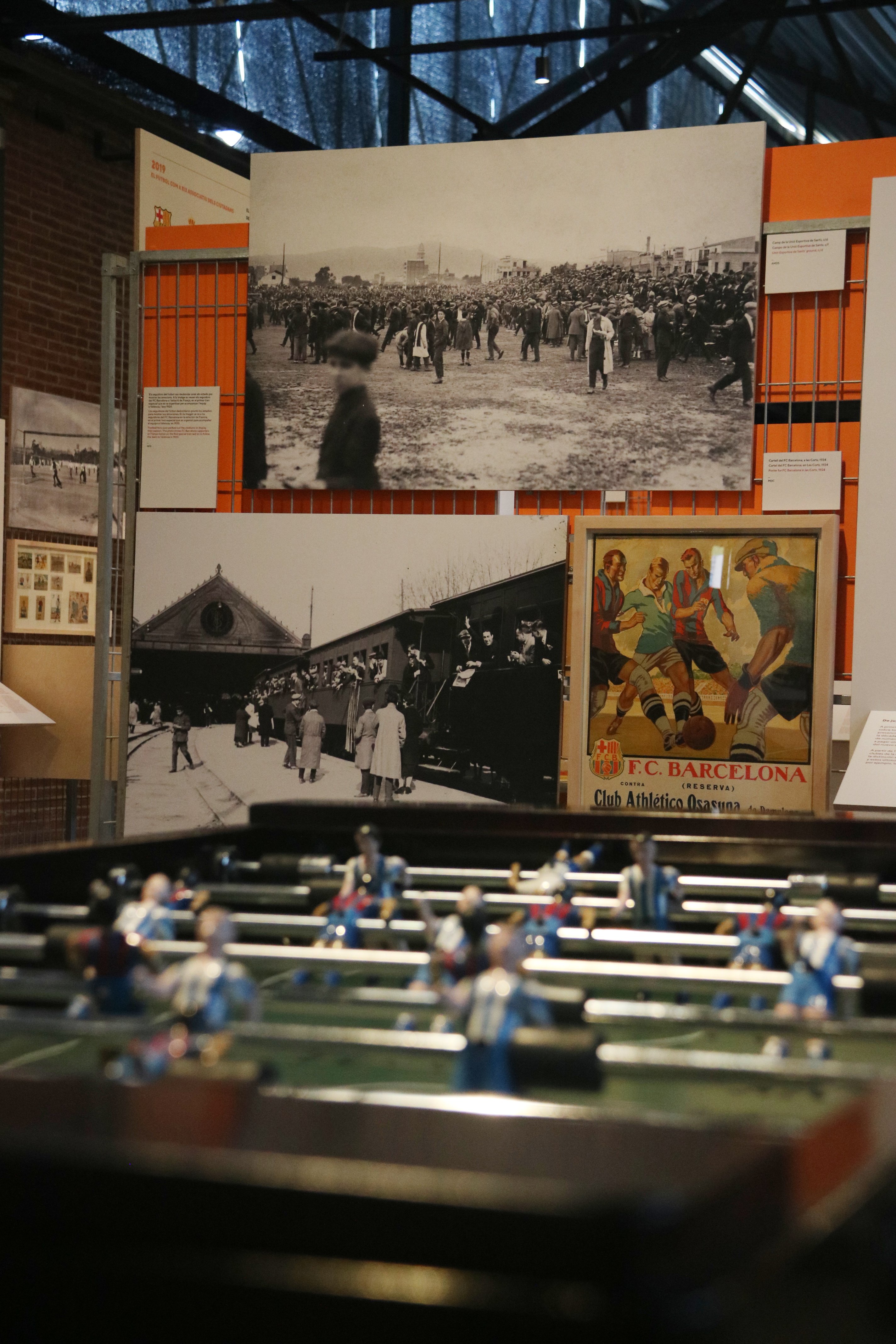Football has contributed to the social construction of Barcelona throughout the twentieth century, in the uses of public space, in internationalization, in the economy, in rivalries, Sunday habits, gambling, and the media. That is the thesis behind 'Barcelona & football. The great social game of the twentieth century', an exhibition from the MUHBA (Barcelona History Museum) "that is not about football", but rather, about how it has contributed to the construction of the city as it is and as it is understood today.
Through all kinds of documentation and historical research, the exhibition shows the impact of playing football on the city, from the first grounds on which the game was played, the creation and importance of neighbourhood clubs, stadiums and urban design, social integration through sport, and of course, the Barça brand.
Barcelona explained through football
The exhibition, which opened last Wednesday and runs until the end of 2021 at the MUHBA Oliva Artés, the Barcelona history museum branch located in Poblenou's Parc Central (Metro: Poblenou or Selva de Mar), highlights how football has provided Barcelona with a mechanism for social and territorial cohesion and, at the same time, the sport has become an international ambassador for the city. "Barcelona expresses itself through the game of football in a way that no other city has done," the museum's director, Joan Roca, said at the exhibition inauguration last week.
The same idea was echoed was by Carles Santacana, one of the two curators of the show, who referred not only to the international power of the brand of a single club (Barça), but also to the adoption of football as the dominant sport of the city at popular level. An example is the birth and the origins of neighbourhood clubs - now over a century old, such as Europa and Jupiter. "In other cities the weighting is more balanced (with other sports also important, or with a greater number of professional teams at the top level, such as in London)," said the curator, also mentioning other Catalan cities where different sports have dominated, such as basketball in Badalona and hockey in Terrassa.
There are spectacular historical photographs of young men playing on a rough earth ground across the street from the Sagrada Família, and of the first stadiums of the city's neighbourhood clubs; documentation of local or more important sporting events, journalistic chronicles and also an audiovisual presentation with experts commenting on this long-standing link between the city and this sport.

In Poble Nou, the MUHBA has opened the exhibition 'Barcelona & football. The great social game of the twentieth century'. Photo: ACN
Why football?
From the museum, Joan Roca explained that they focused on this relationship because it falls within the equation of five "fundamental verbs" that the museum conjugates to approach the history of the city based on its heritage: "to provide, to work, to urbanize, to inhabit or to play", the last being clearly linked to the object of the exhibition. In fact, the exhibition now under way will also soon "play" with a subsequent show being prepared by the center which is to focus on the idea of "inhabiting" the city of Barcelona.
"But what does this have to do with it?", he asked rhetorically. "Many of the mechanisms of social and cultural inclusion in the twentieth century have included football," he said. For example, the sport has been key as an integrating element between locals and newcomers. At the turn of the 20th century, the foundation of clubs like Barça, Espanyol and the now defunct FC Català brought together the youth of well-to-do local families and foreigners who knew the sport, with the example of the Swiss immigrant Hans-Max Gamper (Joan Gamper) - the founder of FC Barcelona - being the best known. In the 1960s, the dynamic was different as Barcelona underwent rapid urban growth and immigration from the Spanish state; the exhibition explains how local football clubs were often the first social entities of new neighbourhoods, and also were among the few types of groups which more or less escaped the harassment of the dictatorship.
And from the grass roots, 'Barcelona & football. The great social game of the twentieth century' shows the sport's key role in the international projection of the city, mainly through FC Barcelona. Finally, the show closes with a question: will the relationship of the sport and the city remain the same in the future? Will other sports (or forms of sport, "such as e-games", as Santacana said) take over, and thus change the way the public relate to this sport of eleven against eleven.

